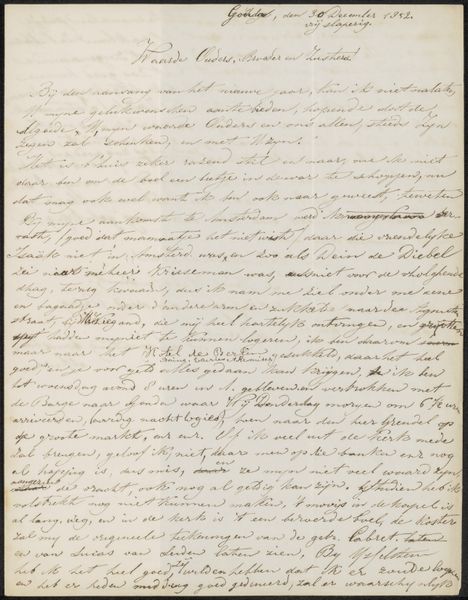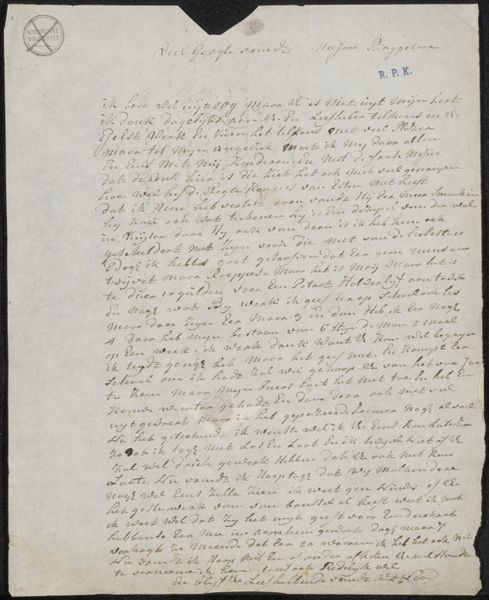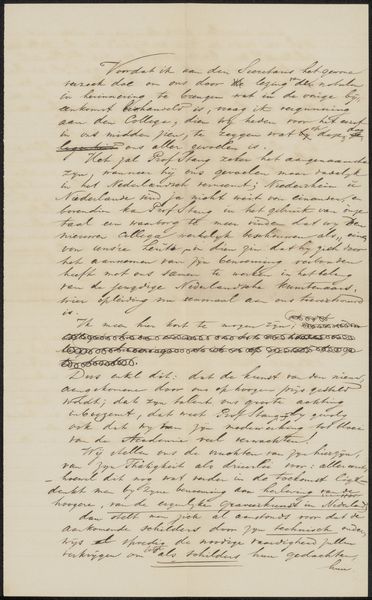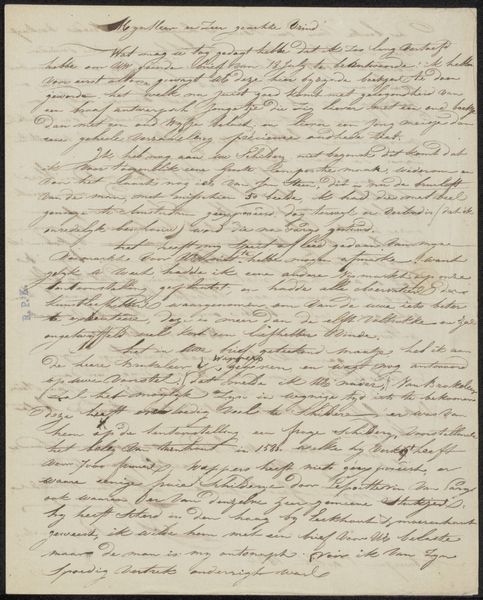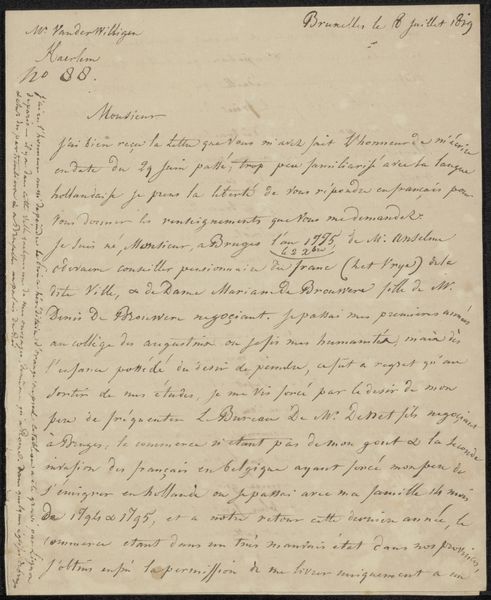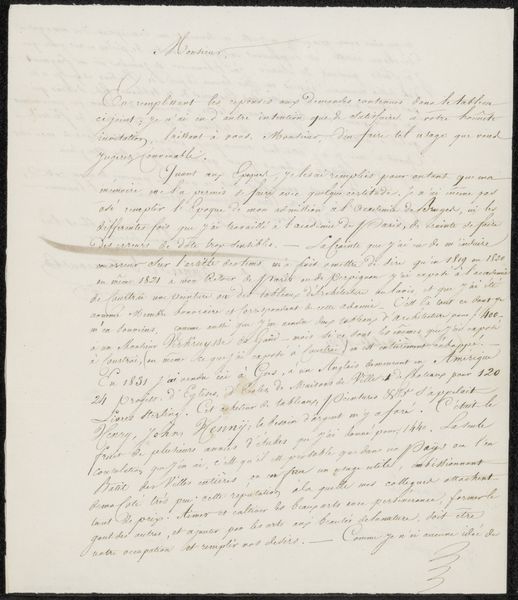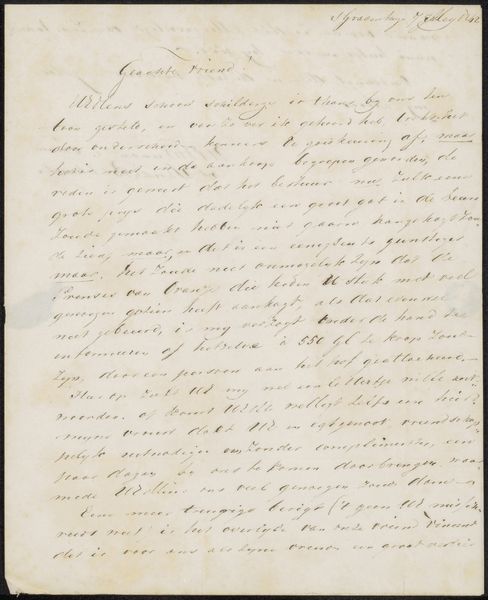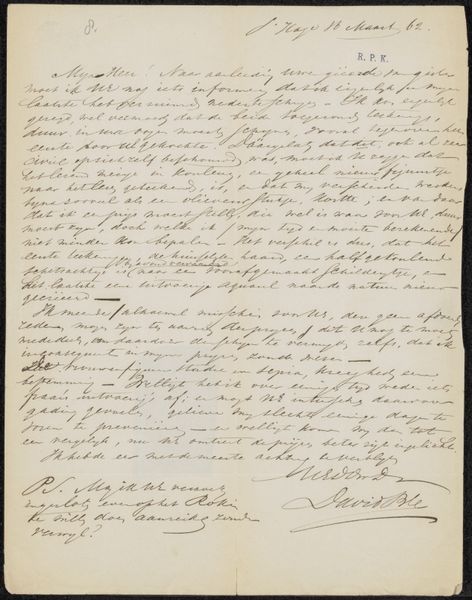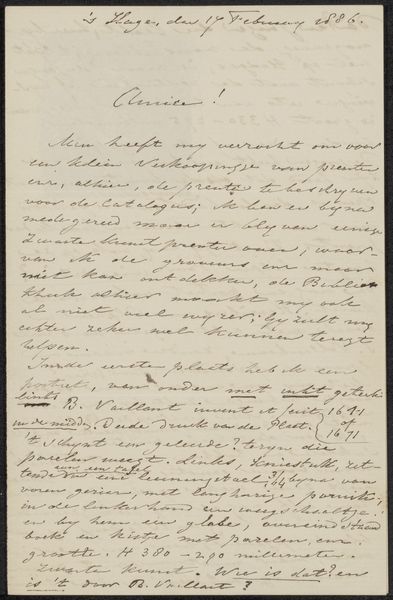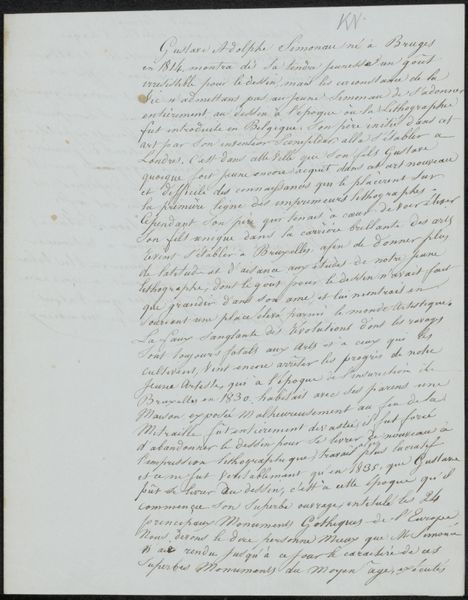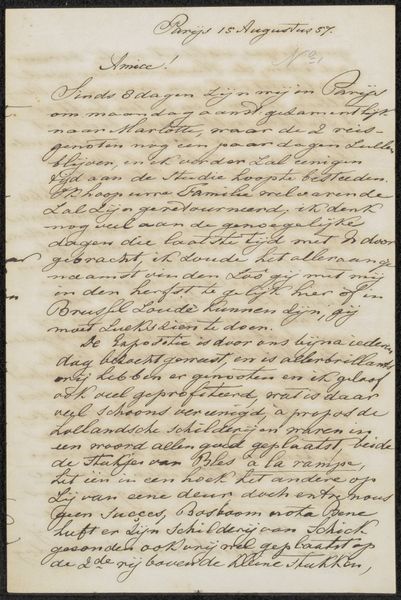
drawing, paper, ink, pen, architecture
#
drawing
#
ink drawing
#
pen drawing
#
paper
#
ink
#
pen
#
architecture
Copyright: Rijks Museum: Open Domain
Curator: We’re looking at a letter by Joseph Hartogensis, possibly from 1850, currently held at the Rijksmuseum. The artwork, titled "Brief aan Jan Weissenbruch", is crafted with ink and pen on paper. Editor: My first impression is one of intimacy and perhaps a slight chaos. The close handwriting gives a feeling of immediacy. Curator: Indeed. The act of handwriting, particularly correspondence, served a crucial role in connecting individuals and solidifying community during a time characterized by widespread displacement, societal transformation, and restricted prospects. The content of this letter, its date, and the parties to whom it was addressed offer unique insights into the artist's journey and mindset amidst this environment. Editor: What's striking is how even a seemingly simple letter becomes an artifact carrying visual symbols. The ink, the specific handwriting—it evokes a sense of history and of personal identity anchored to that history. Curator: Absolutely. The deliberate action of hand delivery holds immense value. It acts as evidence of human experience, societal standards, and historical shifts. Furthermore, handwriting, as a physical manifestation of identity, offers insights into class dynamics, levels of education, and regional variances. Editor: The letter itself could almost be read as an abstract composition; a dense and rhythmic network of dark strokes against a lighter background. The smudges of ink hint at an urgency or a weariness of its creator, even! Curator: Right. The intersectionality of such analysis—attending to race, class, gender—allows us to investigate the circumstances of people creating, circulating, and consuming such images. Hartogensis would have existed within a social network that shaped both his artistic production and, inevitably, the meaning we derive from the remnants that are his material practice. Editor: It's amazing how an artifact seemingly as plain as a letter offers layers upon layers of interpretation, based both on content and on its physical manifestation. The images continue to speak to us, even when the exact language fades away. Curator: Precisely. In its simple form, it carries traces of an important exchange that may reflect both the individual challenges faced by Hartogensis as well as the communal struggle towards emancipation.
Comments
No comments
Be the first to comment and join the conversation on the ultimate creative platform.
